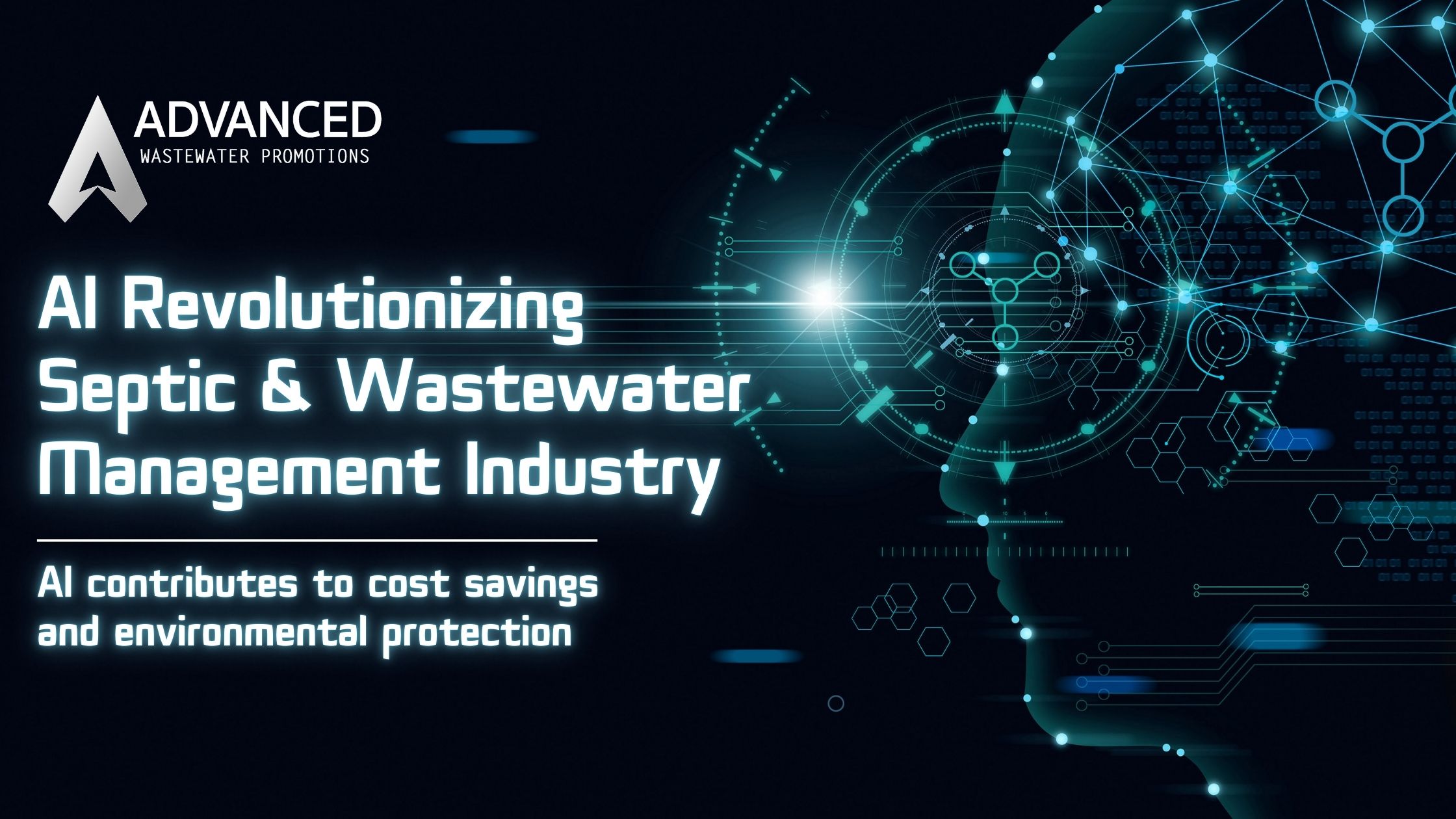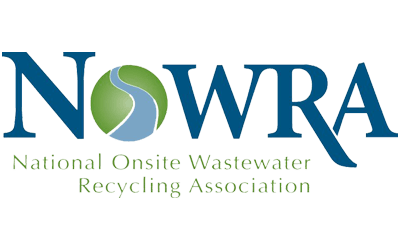AI Revolutionizing Septic & Wastewater Management Industry
Artificial intelligence (AI) is making waves across various sectors, including the environmental industry. By leveraging data-driven algorithms and machine learning, AI tools are helping to tackle some of the most pressing challenges in septic and wastewater management. The septic and wastewater industry is seeing a growing need for innovation to address issues such as system failures, resource management, and regulatory compliance. AI tools can significantly enhance this industry by optimizing maintenance schedules, improving treatment processes, managing water resources, and ensuring compliance with environmental standards.
Optimized Septic System Maintenance
One of the most critical aspects of septic system management is timely maintenance. With the advent of AI technology, this process can be significantly improved by predicting potential failures and maintenance needs before they escalate into major issues. AI achieves this through the use of predictive modeling and sophisticated sensor networks that analyze data from various sources. For instance, sensors installed within septic systems can continuously monitor factors such as sludge levels, water flow, and temperature, transmitting real-time data to a central system where AI algorithms process it.
These algorithms can identify patterns and anomalies that suggest a system might be nearing a failure point. For example, a gradual increase in sludge levels or a sudden spike in water flow could indicate an impending problem. By forecasting these issues in advance, AI allows maintenance teams to intervene proactively, addressing problems before they cause overflows or system breakdowns. This preemptive approach not only enhances the longevity of the septic system but also reduces maintenance costs and environmental risks.
Another key benefit of AI in septic system maintenance is the optimization of pumping schedules. Traditionally, septic systems are pumped on a fixed schedule, regardless of whether the tank actually needs it. This can lead to unnecessary maintenance and wasted resources. AI, however, can analyze usage patterns and predict the optimal times for pumping. By aligning maintenance activities with actual system needs, companies can avoid unnecessary interventions and make better use of their resources.
For example, consider a small business operating multiple septic systems across different locations. Using AI-powered tools, the business can monitor each system individually and receive notifications when a particular system is nearing its capacity. This ensures that each septic tank is pumped only when necessary, avoiding the inefficiencies of a one-size-fits-all maintenance schedule.
In addition to predictive modeling and optimized pumping schedules, AI can also assist in diagnosing issues within the septic system. For instance, if a sensor detects a sudden drop in water flow, AI algorithms can analyze the data to determine whether the issue is due to a blockage, a leak, or another type of malfunction. This diagnostic capability allows for quicker and more accurate repairs, minimizing downtime and preventing further damage to the system.
Several companies are already making strides in this area. BioBot Analytics, for example, has developed AI-powered tools that help small businesses monitor their septic systems. These tools use a combination of sensors and machine learning algorithms to provide real-time insights into system performance, enabling proactive maintenance and reducing the risk of unexpected failures.
AI can integrate with other technologies to create more comprehensive solutions. For instance, AI-powered maintenance systems can be linked with geographic information systems (GIS) to map septic system locations and track maintenance activities over time. This integration can help in identifying trends and patterns that might not be apparent from data alone, offering a more holistic view of septic system health.
Incorporating AI into septic system maintenance also brings the advantage of continuous improvement. Machine learning algorithms are designed to learn from data, meaning that the more data they process, the more accurate their predictions become. Over time, this leads to increasingly reliable maintenance schedules and diagnostic capabilities, further enhancing the efficiency and effectiveness of septic system management.
Ultimately, the use of AI in septic system maintenance offers a range of benefits, from predicting failures and optimizing pumping schedules to diagnosing issues and integrating with other technologies. By leveraging these advanced tools, companies can ensure their septic systems operate smoothly and efficiently, minimizing costs and environmental impact while maximizing system longevity and reliability.
Improved Wastewater Treatment
The treatment of wastewater involves multiple stages and intricate processes to ensure that the effluent meets environmental standards before it is released back into natural water bodies. AI has emerged as a transformative force in this domain by optimizing various treatment processes and enhancing efficiency and compliance. By leveraging data analytics and machine learning, AI-powered tools can continually monitor water quality parameters such as pH, turbidity, and chemical concentrations.
One significant advantage of AI in wastewater treatment is its ability to analyze and interpret vast amounts of data in real time. Sensors installed in treatment plants collect continuous data, which AI algorithms then process to identify patterns and detect anomalies. For example, if the system notices an unexpected change in chemical concentrations, it can alert operators to investigate the issue immediately. This not only helps in maintaining consistent water quality but also aids in the early detection of potential problems, preventing costly shutdowns or regulatory violations.
AI can also enhance the chemical dosing process. In traditional setups, chemical dosing is often based on fixed schedules or manual adjustments, which can result in the overuse or underuse of treatment chemicals. AI systems, however, can dynamically adjust the dosages based on real-time data. This ensures that just the right amount of chemicals is used, optimizing costs and reducing the environmental impact of chemical overuse. For instance, machine learning algorithms can predict the necessary chlorine dosage required to neutralize contaminants, adjusting the amount as needed based on incoming water quality data.
Moreover, AI is invaluable for optimizing the various phases of wastewater treatment, such as primary sedimentation, biological treatment, and filtration. For example, during the biological treatment phase, AI tools can monitor the activity of microorganisms that break down organic matter. By analyzing data on microbial activity, AI can adjust oxygen levels and other conditions to maximize efficiency. This leads to faster processing times and higher-quality effluent.
AI’s role extends beyond optimization to predictive maintenance. Equipment in wastewater treatment plants, such as pumps and aerators, is subject to wear and tear, which can lead to breakdowns and operational delays. AI systems can predict when these pieces of equipment are likely to fail by analyzing operational data and identifying signs of wear. This allows for timely maintenance or replacement, ensuring that the treatment process runs smoothly without unexpected interruptions.
Additionally, AI can assist in energy management within wastewater treatment plants. These facilities are often energy-intensive, and inefficient energy use can lead to high operational costs and increased carbon footprints. AI tools can analyze energy consumption patterns and identify areas where energy use can be optimized. For example, AI can recommend adjustments to aeration cycles or pump operations to reduce energy use without compromising treatment quality. This results in significant cost savings and makes the treatment process more sustainable.
Companies like Siemens have already developed AI-powered systems specifically for wastewater treatment. These systems use advanced algorithms to enhance process optimization, resulting in better resource utilization and reduced environmental impact. Siemens’ technology, for instance, allows for the precise control of treatment processes, minimizing waste and ensuring that all regulatory requirements are met.
In addition to these capabilities, AI tools can also facilitate better decision-making through data visualization and reporting. Advanced AI platforms often include dashboards that present key performance indicators and other critical metrics in an easily understandable format. This enables operators and decision-makers to quickly assess the status of the treatment process and make informed decisions. For instance, a spike in turbidity levels can be immediately flagged, prompting a review and adjustment of filtration processes.
AI also plays a critical role in the integration of decentralized wastewater treatment systems, particularly in areas where centralized infrastructure is not feasible. AI can manage multiple small-scale treatment units, coordinating their operation to ensure overall system efficiency. By analyzing data from various units, AI can optimize each unit’s performance and even manage the distribution of treated water for reuse applications such as irrigation or industrial processes.
Overall, the application of AI in wastewater treatment is revolutionizing the industry by making processes more efficient, cost-effective, and environmentally friendly. The ability to analyze real-time data, optimize chemical dosing, enhance biological treatment phases, predict equipment maintenance needs, manage energy consumption, and facilitate informed decision-making demonstrates AI’s profound impact on modern wastewater treatment facilities.
Enhanced Water Resource Management
Effective water resource management is increasingly critical in regions facing water scarcity, and AI-powered tools offer innovative solutions to tackle this challenge. Through the application of machine learning algorithms and advanced data analytics, AI can significantly improve the efficiency of water distribution systems and detect leaks that might otherwise go unnoticed.
One key advantage of AI in water resource management is its ability to predict water demand accurately. Traditional water management systems often rely on historical data and fixed schedules to distribute water, which can lead to inefficiencies and wastage. AI, on the other hand, can analyze real-time data from smart meters, weather forecasts, and other relevant sources to forecast water demand more precisely. By understanding usage patterns and anticipating future needs, AI systems can adjust water distribution dynamically, ensuring that resources are allocated where they are needed most. This not only minimizes wastage but also enhances the reliability of water supply in both residential and commercial settings.
For example, during peak usage periods, such as hot summer days, AI can predict increased water demand for activities like irrigation and adjust the distribution accordingly. Conversely, during periods of low demand, the system can reduce the flow to conserve resources. This level of precision in water management helps in maintaining a balance between supply and demand, preventing both shortages and overuse.
Leak detection is another critical area where AI is making a significant impact. Undetected leaks can lead to substantial water loss and damage to infrastructure. Traditional methods of leak detection, such as manual inspections and acoustic sensors, are often labor-intensive and time-consuming. AI-powered tools, however, can analyze data from a network of sensors and smart meters to identify anomalies that indicate potential leaks. For instance, a sudden drop in pressure or an unexpected spike in water usage can trigger an alert, prompting further investigation.
These AI systems can pinpoint the location of leaks with remarkable accuracy, allowing for timely repairs and minimizing water loss. By addressing leaks promptly, water utilities can save considerable amounts of water and reduce the costs associated with water loss and infrastructure damage. Companies like LeakBot have developed AI-based solutions that provide small businesses with advanced leak detection capabilities, helping them conserve water and reduce operational costs.
Beyond leak detection and demand forecasting, AI also plays a vital role in optimizing the overall operation of water distribution networks. By continuously monitoring the performance of pumps, valves, and other critical infrastructure, AI tools can identify inefficiencies and suggest adjustments to improve system performance. For instance, AI can optimize pump schedules to reduce energy consumption, ensuring that pumps operate only when necessary and at optimal efficiency levels.
Additionally, AI can assist in managing water quality by monitoring various parameters such as turbidity, pH levels, and contaminant concentrations. By analyzing data from sensors placed throughout the distribution network, AI systems can detect changes in water quality and alert operators to potential issues before they escalate. This proactive approach helps in maintaining high standards of water quality and protecting public health.
AI’s capabilities extend to emergency response as well. In the event of natural disasters or unexpected disruptions, AI can provide real-time insights and recommendations to ensure a swift and effective response. For example, during a drought, AI can help prioritize water distribution to critical areas and identify alternative water sources. Similarly, in the aftermath of a flood, AI can assist in assessing the impact on water infrastructure and coordinating repair efforts.
AI-powered tools can facilitate better decision-making by providing comprehensive data visualization and reporting capabilities. Advanced AI platforms often include dashboards that present key performance indicators and other critical metrics in an easily understandable format. This enables water managers and decision-makers to quickly assess the status of the distribution network and make informed decisions based on real-time data. For example, a sudden drop in pressure can be immediately flagged, prompting a review and adjustment of distribution strategies.
In the context of climate change and increasing water scarcity, the integration of AI into water resource management is not just a technological advancement but a necessity.
Improved Regulatory Compliance
In an industry as regulated as septic and wastewater management, staying compliant with environmental laws and standards is crucial. AI technology has proven to be a valuable ally in this regard, automating and streamlining the processes needed to maintain compliance. This not only reduces the administrative burden but also mitigates the risk of non-compliance penalties.
One of the key advantages of AI in regulatory compliance is its ability to automate data collection and reporting. Traditional methods often involve manual data entry and spreadsheet management, which are time-consuming and prone to human error. AI-powered systems can continuously gather data from various sensors and monitoring devices installed throughout the wastewater treatment facility. This real-time data collection ensures that all relevant metrics are captured accurately and consistently, providing a reliable basis for compliance reporting.
For instance, AI tools can monitor parameters such as chemical concentrations, flow rates, and pollutant levels, automatically flagging any deviations from regulatory limits. This proactive approach allows facility managers to address potential compliance issues before they escalate, avoiding fines and ensuring that the treatment processes remain within legal parameters. Additionally, AI can generate comprehensive reports that summarize key performance indicators, making it easier for companies to submit the necessary documentation during regulatory audits.
Another significant benefit of AI in this context is its ability to provide predictive analytics. By analyzing historical data and identifying trends, AI systems can forecast potential compliance risks. For example, if data indicates that a certain pollutant level tends to spike during specific operational conditions, AI can alert operators in advance, allowing them to take preemptive measures to stay within regulatory limits. This foresight can be invaluable in maintaining continuous compliance and avoiding unexpected violations.
Moreover, AI tools can streamline the process of regulatory updates. Environmental regulations are frequently updated, and keeping abreast of these changes can be challenging for facility managers. AI systems can be programmed to automatically incorporate new regulatory requirements into their monitoring and reporting protocols. This ensures that companies remain compliant with the latest standards without the need for manual intervention, reducing the risk of overlooking critical updates.
In addition to monitoring and reporting, AI can assist in optimizing operational processes to enhance compliance. For example, by analyzing data on chemical dosing and treatment efficiency, AI can recommend adjustments that improve the overall effectiveness of wastewater treatment. This not only helps meet regulatory standards but also optimizes resource usage and minimizes environmental impact.
Companies like Envirosuite are already leveraging AI to provide comprehensive compliance solutions. Their AI-powered platforms offer real-time monitoring, predictive analytics, and automated reporting, making it easier for businesses to manage their environmental responsibilities. These solutions can be particularly beneficial for small businesses, which may lack the resources to maintain a dedicated compliance team. By adopting AI tools, they can achieve a higher level of regulatory adherence with less effort and expense.
Furthermore, AI’s capability for data visualization plays a crucial role in compliance management. Advanced platforms offer dashboards that present real-time data in a clear and accessible format, allowing operators to quickly assess the compliance status of their facility. Visual alerts and automated summaries ensure that any deviations are immediately noticeable, facilitating swift corrective actions.
In summary, AI tools offer a robust and efficient means of ensuring regulatory compliance in the septic and wastewater industry.
Some Added Things To Consider
Adopting AI in the septic and wastewater industry isn’t without challenges. For instance, integrating AI systems requires significant initial investment, which can be a barrier for small businesses. According to a McKinsey report, AI adoption can lead to a 10-15% reduction in operational costs, but the upfront costs and required technical expertise can be daunting. To mitigate this, companies should start with pilot projects to demonstrate ROI before a full-scale rollout. Additionally, the industry must address data privacy and cybersecurity concerns, especially since AI systems often rely on vast amounts of sensitive data. A case study from Veolia showed that implementing robust cybersecurity measures alongside AI tools resulted in a 30% improvement in operational security. Another key consideration is the need for ongoing maintenance and updates to AI systems. Unlike traditional systems, AI tools require regular data updates and algorithm tuning to remain effective. Practical tips for implementation include partnering with AI vendors who offer comprehensive training and support and engaging employees in continuous learning to manage AI systems effectively. Lastly, collaboration with regulatory bodies can ensure that AI tools are compliant with current standards and can adapt to future regulatory changes.
Some Final Thoughts
AI tools offer transformative benefits for the septic and wastewater industry, ranging from predictive maintenance to optimized resource management. These technologies enable more efficient processes, accurate diagnostics, and real-time monitoring, all of which contribute to cost savings and environmental protection. By proactively addressing potential failures and optimizing treatment processes, AI enhances system reliability and compliance with regulatory standards. The integration of AI also facilitates better decision-making through data visualization and predictive analytics, ensuring that resources are used effectively and sustainably.
As we navigate the complexities of modern environmental challenges, the adoption of AI in the septic and wastewater sectors is not just advantageous but essential. Embracing these technologies can significantly improve operational efficiency, reduce environmental impact, and ensure regulatory compliance, paving the way for a more sustainable future.







